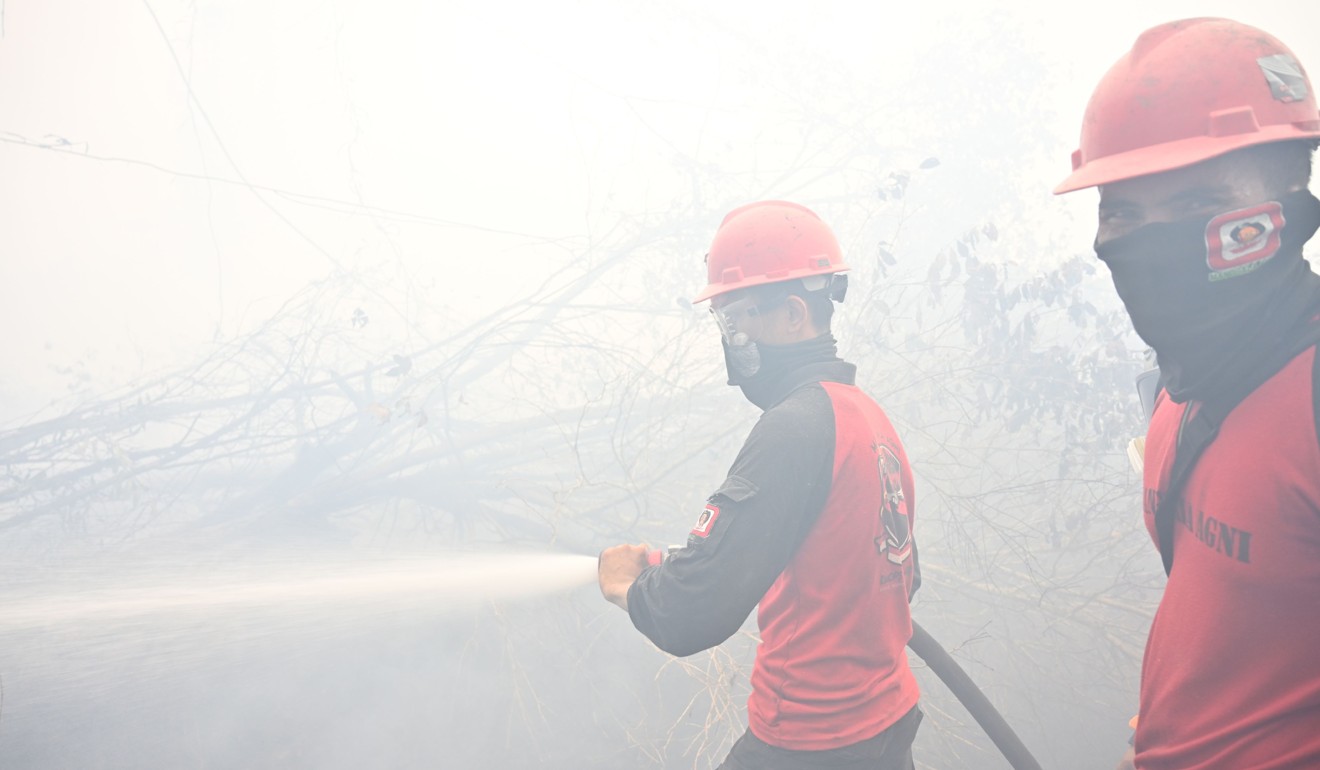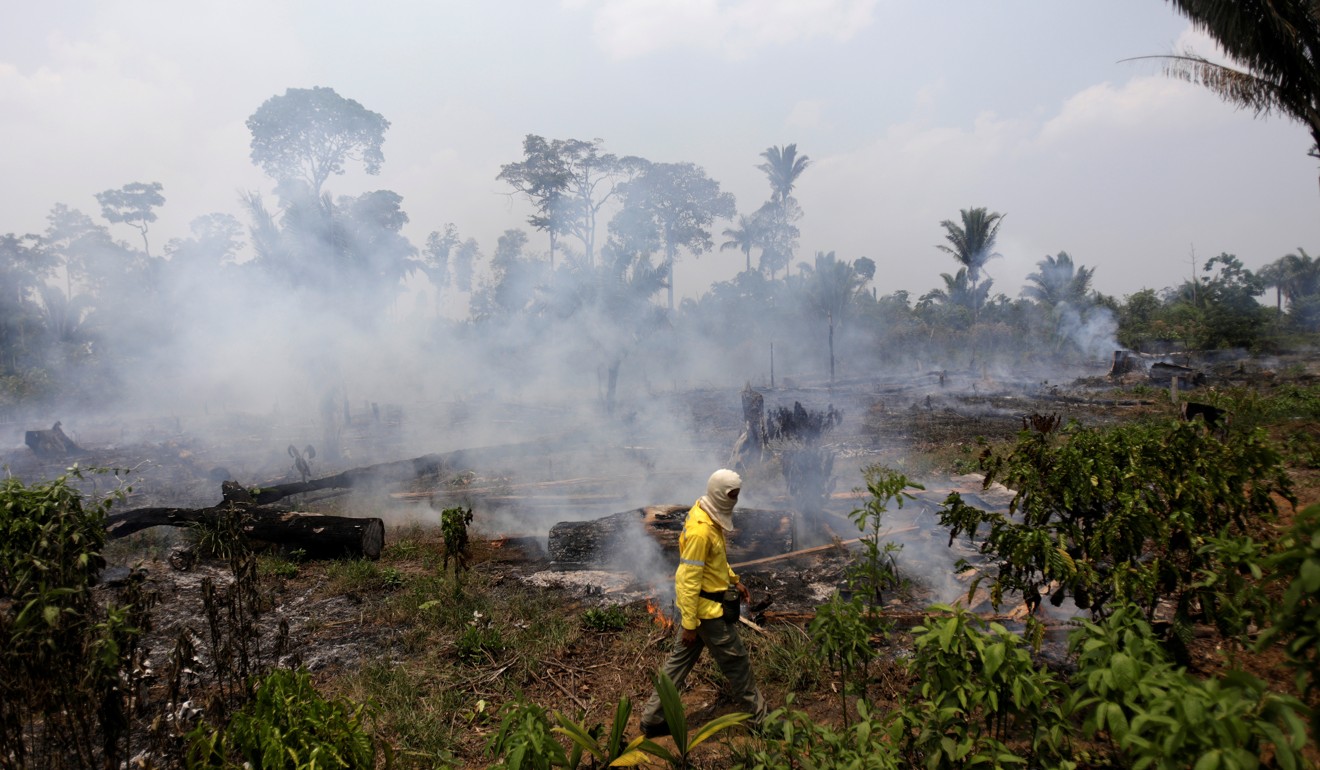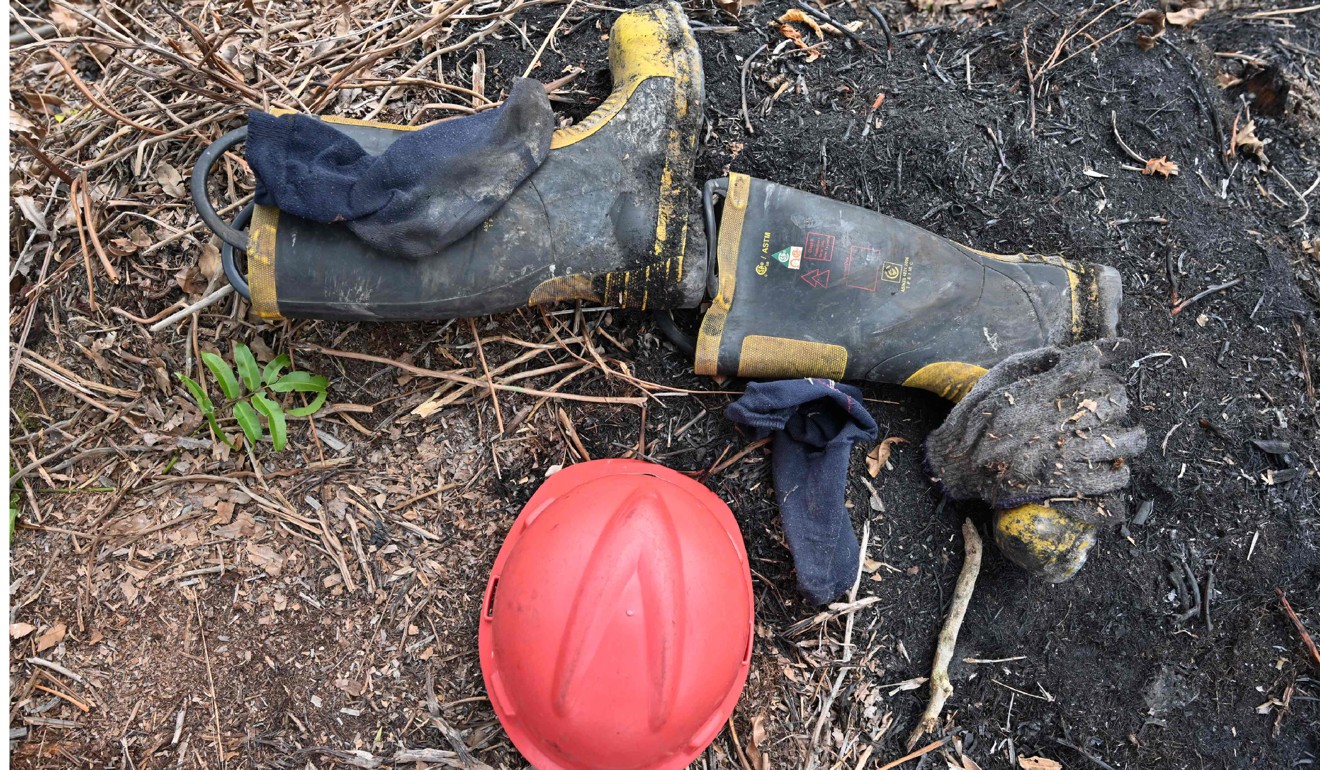
Indonesia arrests 185 as it struggles to bring huge underground fires under control
- Vast blazes are ripping across the archipelago’s rainforests and smouldering deep beneath the surface in once-swampy areas known as peatlands
- Authorities say they have arrested some 185 people suspected of being involved in activities that led to the out-of-control fires sweeping the country
Vast blazes are ripping across the archipelago’s rainforests, unleashing a toxic haze over Southeast Asia that has triggered health fears and sent diplomatic tensions with Indonesia’s neighbours soaring.
Jakarta deployed more than 9,000 personnel to battle fires turning land into charred landscapes and consuming forests in hard-hit Sumatra and Borneo islands.
But many of the blazes smoulder deep underground in once-swampy areas known as peatlands, where they can last for months and release eye-watering amounts of thick, acrid smoke.

On Monday, authorities said they had arrested some 185 people suspected of being involved in activities that led to out-of-control fires sweeping the country.
“Indonesian Police will enforce the law against anyone who is proven to have carried out forest and land burning, whether it was done intentionally or through negligence,” National Police spokesman Dedi Prasetyo told reporters in Jakarta.
“This is a last resort. The most important thing is prevention.”
Four corporations were also being investigated, he added.

Thick haze in Borneo – where air quality levels have plummeted to “dangerous” levels in some areas – caused the cancellation of about a dozen flights on Sunday, national airline Garuda said.
Rival Lion Air said about 160 Borneo flights had been affected at the weekend.
Meanwhile, nearly 150,000 people have been treated for acute respiratory infections linked to the haze in recent months, according to Indonesian health authorities.
“It’s so much harder to fight fires on peatlands,” said a dirty and exhausted Hendri Kusnardi outside smog-hit Pekanbaru city in Sumatra.
“Even after we’ve managed to put out a fire on the ground, sometimes it is not over because it’s still burning underground. And then the next morning the ground fire will just reignite.”
The culprit behind Indonesia’s blazes is usually illegal fires set to clear land for the lucrative palm oil and pulpwood industries – and the situation this year has been worsened by drier weather.
Some of the most serious fires happen in carbon-rich peatlands – topped with layers of decomposed plant material several metres thick – which become highly combustible when they’re drained of water to be converted into plantations.

“The forest and peatland fires that occur every year are a crisis created by human behaviour,” said Rusmadya Maharuddin, a forest campaigner at Greenpeace Indonesia.
“Sometimes the fires will continue to burn for months, releasing emissions and causing haze.”
Peat fires can belch out three times as much smoke per kilogram of material than high-temperature forest fires, she added.

Fighting peatland fires comes with myriad challenges because they are often in remote locations, the soft soil makes them inaccessible by car and firefighters need huge amounts of water – often pumped below ground – to get at subterranean blazes.
Indonesia has deployed water-bombing helicopters, but the onset of the rainy season, which usually starts in October, could be the only thing able to douse the fires.
“When you’re dealing with large areas of peat burning it’s just so expensive to bring in large quantities of water,” said Michael Brady, an Indonesia-based peatlands expert at the Centre for International Forestry Research.

“Water-bombing is not very effective because you just can’t drop enough water” to douse them, he added.
Satellite radar used to find hotspots – areas of intense heat which indicate a high chance of fire – does not always pinpoint below-ground blazes.
“It may not show up as a hotspot …[because] there might not be enough heat at the surface of the ground,” Brady said.
“So, one of the challenges is just to detect them.”
Authorities are strengthening law enforcement to catch those responsible for illegal burning and have moved to restore degraded peatland forests – a key buffer against annual flooding and home to endangered species, including Sumatran orangutans.

“This is not going to go away,” he added.
“We’re not going to find a solution to eliminate fires on the landscape completely and we’re not going to ‘tackle’ it. This requires an ongoing investment.”

.png?itok=arIb17P0)